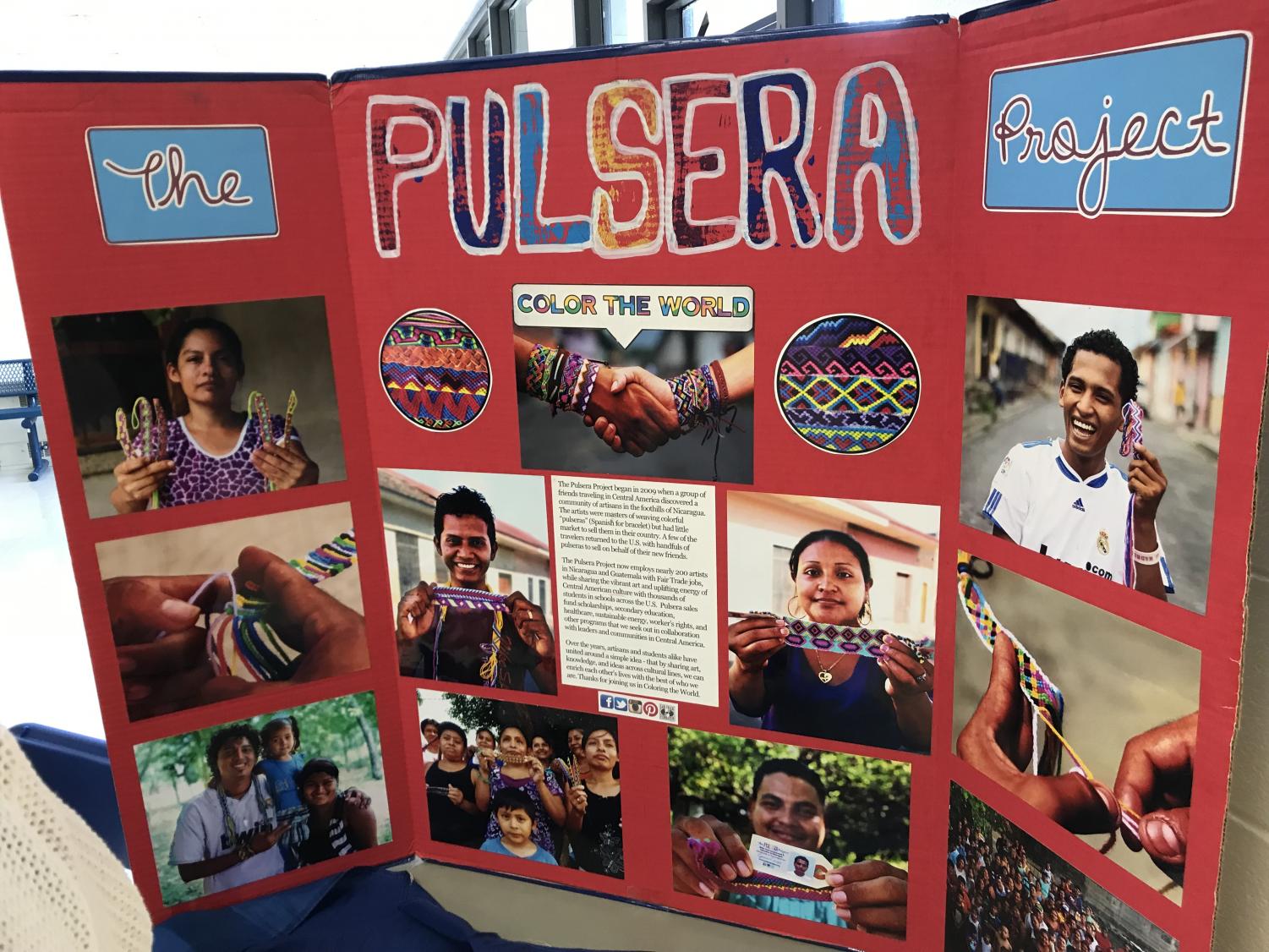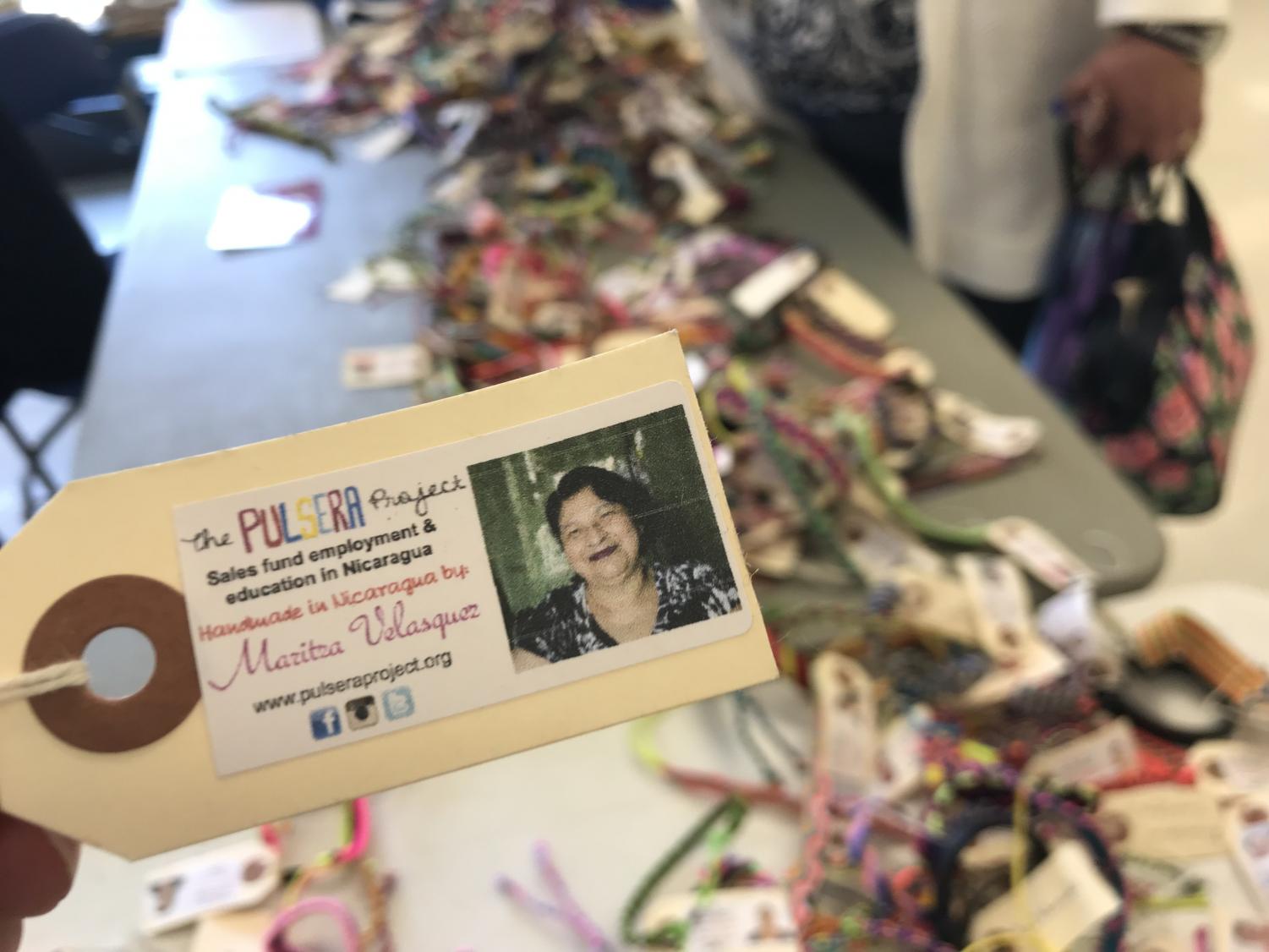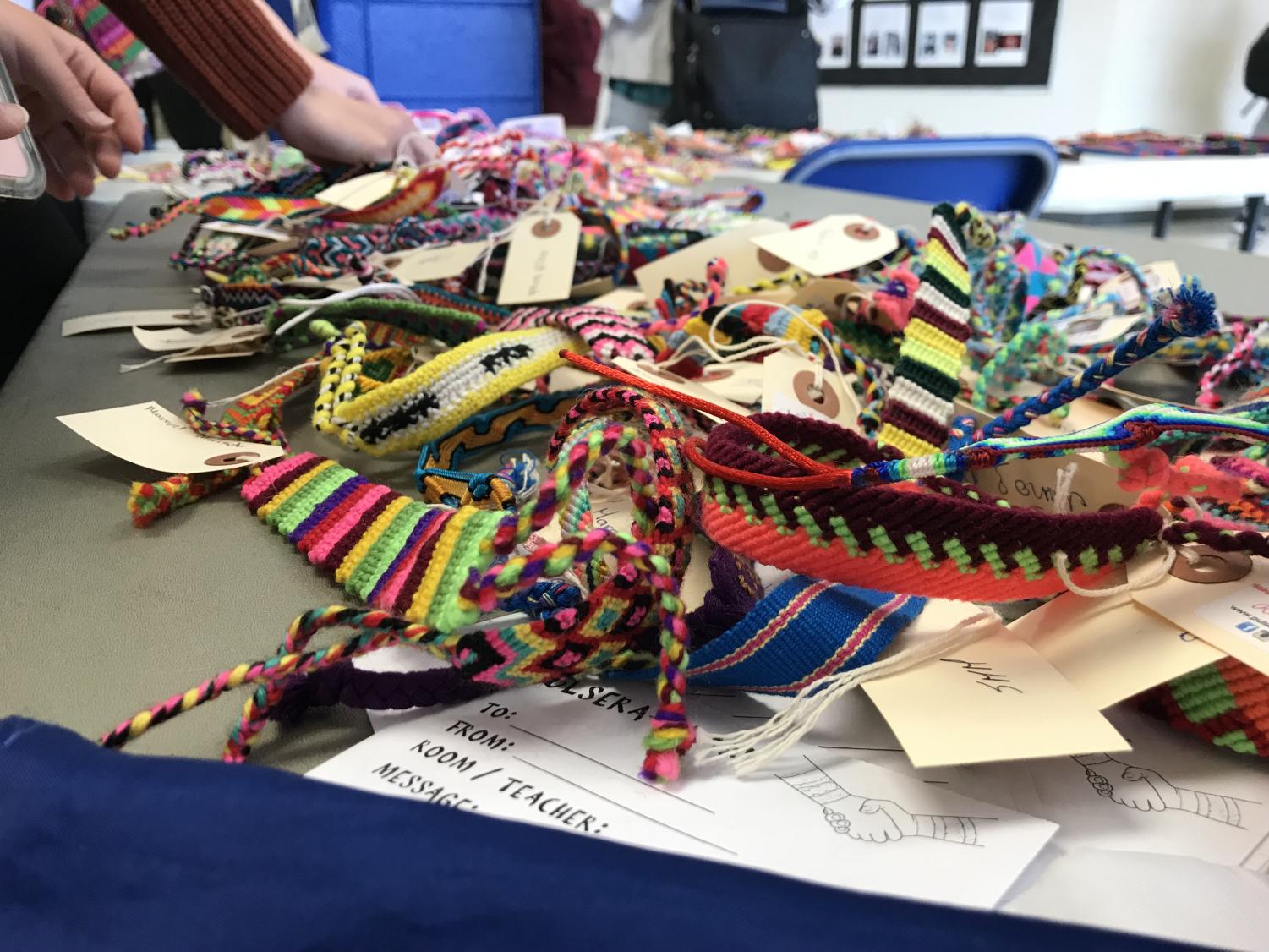Pulsera Project brightens LZHS with colorful bracelets
Pulsera Project brings new hope to men & women in Central America
April 23, 2019
Vibrant oranges and cool blues, different patterns and threads all tied into a bracelet made by someone hundreds of miles away. These seven-inch pieces of art brighten the school while also educating students and staff about social justice issues in Central America.
Through the Pulsera Project, a project in which Michaela Towne, Spanish teacher running the Pulsera Project and her students participated last week, bracelets were sold during lunch periods to help less fortunate men and women from Central American countries such as Nicaragua and Guatemala can rebuild themselves with the assistance of others buying their art.
With purchasing a bracelet, the proceeds go towards the artisans’ well-being, whether that has to deal with healthcare, housing, or even scholarships. According to Towne, each bracelet sale could mean all the difference to some of these artisans.

A poster explaining the Pulsera project to students who may be interested. For Towne, this project was a good way to not only help other communities, but also educate her students on human rights.
“Five dollars to most of us isn’t too much money but when you’re thinking about how these people get to sell the things they’ve made in a country where five dollars isn’t much, it’s a lot of money to them,” Towne said.
Towne, who first became aware of the project when she saw it on Instagram, said she was not only able to use the opportunity as a way to help the Central Americans but also to educate her Spanish V Honors students.
“We talk a lot about poverty and we talk a lot about immigration and right now there are a lot of people in Central America trying to flee because of things like poverty and violence,” Towne, who discusses human rights with her students, said.
“[We’ve] learned a lot about how people get denied [human rights] all the time in different countries and how even situations here always happen and how we can be aware of it just to fix it in the future,” said Sophia Goushchina, senior.
In order to help out those people who live in places much less fortunate than LZ, the Pulsera Project is a nonprofit organization that supports artisans from Central America through sales of handmade threaded bracelets. Each bracelet costs $5 and comes with a little tag that has the artisans’ names, where they live, and a picture of them. Nearly every bracelet has it’s very own pattern and color scheme.

Each bracelet has a tag that contains the artisans’ names, where they live, and their picture. This piece of information makes the bracelet more personal, as it gives students glimpses of the people who made the bracelet.
“You can see their handwriting, where they live, it makes it much more personal,” said Towne who thinks the personal aspect helps make the bracelets more desirable.
Through the selling of these bracelets within our school, it is possible to help these Central American artists live life better and with more resources.
“Hopefully by empowering these people through capitalism [and] commercialism, buying their products can help them lead their best life in their home country without having to leave,” said Towne.
